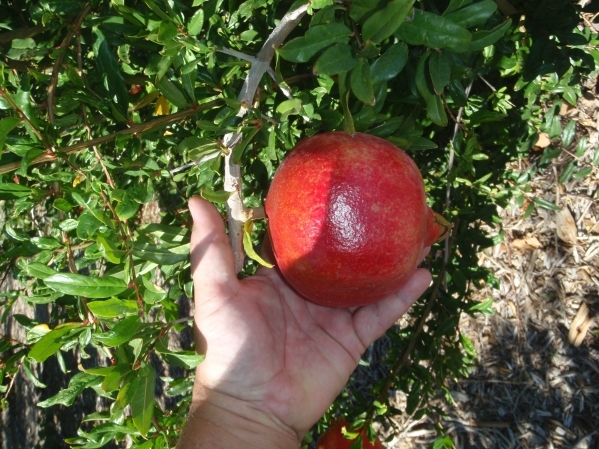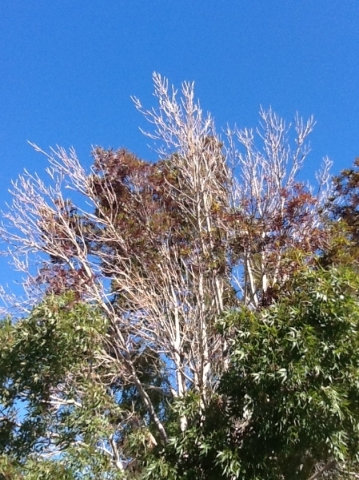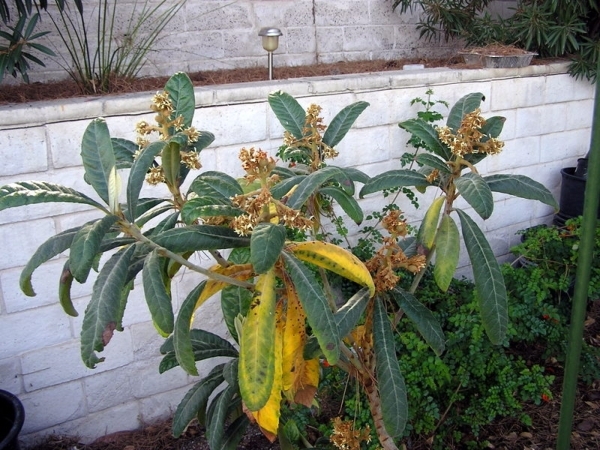Succulent dieback can happen due to overwatering
Q: A friend of mine is having trouble with his century plants, agave and cactuses turning yellow in June and July. These plants are in a rock yard with hand watering. They are 2 years old.
A: Two things come to mind when agave is yellowing during early to mid-summer: watering too often or agave weevil. May, June and July are the months we see yellowing of the tops and death from agave weevil. Because you mentioned so many plants are affected, watering too often may be the problem.
The weevil lays eggs in the leaf crotches. The eggs hatch and tunnel into the core of the agave to feed, bringing with them fungi and bacteria that rot the juicy core. After extensive feeding and decomposition, the plant begins yellowing and finally collapses during the heat of the summer.
Preventive treatment is in April with insecticides that kill the insect before it begins feeding. Insecticides are applied in a liquid drench or granules around the plant and watered in or as a liquid spray that runs into the leaf crotches.
Use systemic insecticides in a single application in April or organic insecticides in multiple applications. Always follow the label.
The other reason might be watering too often and rotting the roots. The soil should be dry between waterings. If watering has to be done frequently, then apply small amounts of water at each irrigation.
Q: The leaves closest to the trunk of my 2-year-old loquat have started turning yellow and falling off in February. New leaves have started to grow, and now they look fine.
A: Most likely, this tree went through some sort of shock, which initiated a leaf drop. The shock can be related to watering, fertilizers applied too heavily or too close to the trunk, a freeze, or loquats can get decimated by borers.
When the leaves die, they lose their green chlorophyll and turn yellow due to yellowish pigments remaining in the leaves.
The good news is there is new growth, so the problem was temporary. This time of year rules out borers as the problem and focuses more on watering or fertilizers.
Watering problems can be from too much water applied or not watering often enough. For instance, if it went through a dry spell, or it became unusually hot, it will drop its leaves. If the soil is too wet for an extended period, it will drop its leaves. If fertilizer was applied too close to the trunk or the rate was too high for the plant, it will drop its leaves.
There are two types of overwatering. One is related to the volume of water given to the plant, while the other relates to how frequently the water is applied. The overwatering I am talking about involves applying water too often.
Giving a plant too much water in a single application is usually not a big problem unless the soil does not dry out before the next irrigation. Once a week is not too often, in my opinion, unless you have a drainage problem.
If you do not think the soil has been too wet or you have not fertilized the tree, then I would wait and see what happens.
If you applied fertilizer to the soil, and you suspect the application was too much, then flood the area with water and push the fertilizer away from the trunk, past the roots, so it is diluted.
Q: Which varieties of pomegranate are good to grow in the Las Vegas area?
A: Southern Nevada has a good climate for pomegranates, similar to climates where they originated. In colder areas, pomegranates can freeze back. In warm but humid climates, pomegranates have disease problems that we never see in the desert.
In the United States, we have a wide selection of pomegranates available to us collected from throughout the world. Some of the newer selections may be cold-sensitive in parts of our valley. I would stay away from unknown varieties unless you want to experiment.
For the most part, all of the pomegranates available commercially do well. Of course, the flagship pomegranate variety is Wonderful with its beautiful outer and inner ruby red color.
In actuality, the rind of pomegranates come in a wide range of colors from dark purple to nearly black all the way to lemon yellow and off-white. The pulp around the seeds, or arils, vary in color from off-white to pink to dark red. Seeds can be hard or soft and edible.
You will not go wrong with varieties such as Sweet or Eversweet. A local favorite, sometimes referred to as seedless, is Utah Sweet, a selection from Sweet. A newly introduced variety from the former Soviet Union receiving rave reviews is Parfianka.
Other varieties I like include Sharps Velvet, Red Silk, Pink Satin and Grenada. I have seen no winter damage in our climate on any of the varieties mentioned above.
Q: I have a 23-year-old ash on a drip system watering twice per week during the summer. The tree is watered with 10 5-gallon-per-hour drip emitters for 30 minutes. It is located in a southern exposure and planted in a rock mulch. The tree has begun to lose leaves, and limbs are dying. Is the tree just old, or am I doing something wrong?
A: You are watering this tree about 50 gallons a week if all the emitters are working properly. As hot weather is upon us, that will not be enough water to support this tree. At 23 years of age, that tree should receive 3 to 5 times that amount of water in one week during the summer.
Ten emitters for that tree is probably adequate if they are spaced 2 to 3 feet apart under the canopy of the tree. You want to wet about half the area under the canopy of the tree each time you water and to a depth of 18 to 24 inches. It would be best to increase the number of emitters under the tree.
Instead of just placing more emitters under the canopy of the tree, an alternative is to place other plants with drip emitters under the canopy. There are several advantages to the tree in doing this.
May 1 is usually the critical time when we increase the frequency of applied water from once a week (beginning the first week of February) to twice a week.
Ash Decline is a disease found in the valley for more than 30 years now and demonstrates these kinds of symptoms. Ash trees planted in rock mulch in hot locations have had more problems with this disease than trees planted in other locations or in lawns.
Ash Decline kills the branches of ash trees. If the trees are not pruned and maintained properly, these trees will become a safety hazard. Unfortunately, there is no cure for this disease, and the trees must be removed.
This disease was first found on Modesto ash but has been found on other ash varieties, such as Arizona ash, too. This disease is why I no longer recommend ash trees for home landscapes here.
This disease should not be confused with the dieback of limbs when older, established ash trees are no longer growing in lawns but part of a retrofit to desert landscaping. In cases like these, the usual reason for limb die back is because not enough water is given to the trees after re-landscaping and a new irrigation system is installed.
— Bob Morris is a horticulture expert living in Las Vegas and professor emeritus for the University of Nevada. Visit his blog at xtremehorticulture.blogspot.com. Send questions to Extremehort@aol.com.

























